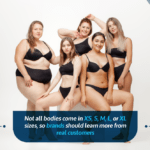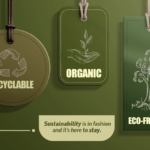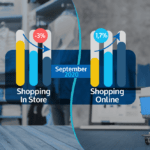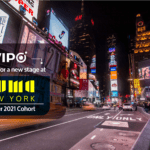It is a fact that the fashion industry has been hit hard by the pandemic. In United States, clothing sales dropped by 79% between April and May of this year. Many big brands have seen their numbers turn red in Latin America and Europe.
However, amidst this landscape of global confinement and fear of contagion, new fashion trends have started to blossom. As clothing sales dropped overall, the consumption of track pants (or sweatpants) has grown exponentially as is the case for comfortable stay-at-home clothing.
Basic and minimalistic clothes are gaining momentum, although customers still seek some sort of distinctive element.
Executive pajamas
The comfort of pajamas can now be combined with a formal shirt. Japanese brand Whatever Inc. created this blend of intents through executive pajamas: a wearable outfit that looks like a shirt from the waist up while still being a soft pajama from the waist down.
This product has been praised all over the world for solving two needs. First, you can be comfortable at home. Second, you can look office-ready without having to change for an online meeting.
Fashion designers and analysts agree that the executive pajama is only one of the many innovations that stand out in the time of pandemic. Double-style clothing to use during remote work will become more common over the next months.
Remote work and virtual meetings drive the need to create comfortable clothes with a formal touch. These are double-style clothes.
The right time
This trend aiming towards comfort was evidenced in the Entireworld brand from USA. Its designer and owner, Scott Sternberg, told the story of how his store was overwhelmed by the demand of sweatpants during the crisis. On a regular day, Entireworld would sell 46 sweatpants. Then, at the end of March, sales had been multiplied by six. A similar case happened for their shirts, socks and underwear.
The New York Times reported how this miracle came to be. When quarantine restrictions were being set in motion and sales were plummeting, Sternberg wrote an e-mail. It reached almost 30.000 subscribers of the Entireworld newsletter.
The message was not a sales ad. It was actually the sincere voice of the designer, confessing that he feared for the future of his company and his staff. The response was amazing: an avalanche of orders for sweatpants came swooping in. Speaking from the heart at the right time led thousands of customers who needed sweatpants to buy them from Entireworld.
Sternberg explained that his track pants became a success not only thanks to his message. These also meet halfway between what is aspirational and what is accessible (60 USD). They combine color, fabric and design which makes them functional not only to stay at home but also to go out. In fact, some people combine them with luxury brands such as Burberry.
This trend is sticking this fall. Net-a-Porter has already seen an increase of 40% in their track pants. A review from Entrepreneur confirms this trend: “The popularity of track pants is on the rise. In particular, for neutral colors such as grey and soft pastels.”
Masks with a purpose
Masks, which are necessary for health purposes, have evolved into luxury complements while having a social impact.
It is clear that masks have set foot in the coronavirus society as a mandatory protection garment. Yet they have also evolved over recent months with a triple purpose: protection against the virus, social collaboration and fashion accessory.
Many brands have created memorable and peculiar designs. Some of the most expensive masks in the market include Versace (195 USD) and Marine Serre (129 USD). These luxury pieces are being valued more for their social contribution rather than their brand-related image. For instance, Adidas launched a pack of black and white reusable masks for 13 Euros and, for every unit sold, 2 Euros were donated to the NGO Save the Children.
The case of German supermarket chain Lidl was similar. In alliance with Spanish designer Agatha Ruiz de la Prada, they designed a three-mask combo with a cost of 4 Euros. For every combo sold, Lidl donated 1 Euro to an organization that supported children’s health. In both cases -Adidas and Lidl- the response of the public was staggering, leaving no product on the shelves for weeks.
Both brands have managed to stand out during the crisis while earning financial benefits. They added social value to their products, which is essential to navigate in these hard times. When innovation comes in, success can take place as seen for the executive pajamas.
Before concluding, it is important to remember that innovation not only applies to a product. This practice must also be spread to other areas of the business including sales. In this sense, VIPO is a true ally of the retail sector.
Its innovative alternative in line with the needs and preferences of customers while shopping. Its technology uses artificial intelligence and integrates it into interactive screens within stores. Hence, the screen takes on the role of a personal shopper to deliver a unique experience. Furthermore, while the user receives suggestions based on taste and data, VIPO collects information regarding the overall interaction. Afterwards, data can be used to improve sales strategies and become a helpful tool for both customers and businesses.
CRM TEAM
VIPO Group





